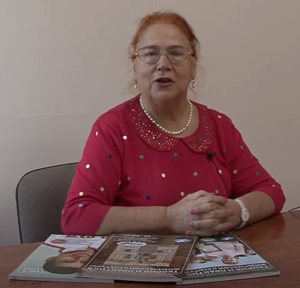Planning loads of different intensity in the annual cycle of training highly qualified cyclists in the aspect of foreign research
ˑ:
Dr. Hab., Professor A.I. Pogrebnoy1
PhD I.O. Komlev1
1Kuban State University of Education, Sport and Tourism, Krasnodar
Objective of the study was to identification of modern approaches to planning loads of different intensity in the annual training cycle of highly qualified cyclists.
Methods and structure of the study. Analysis of literary sources. More than 50 sources of foreign literature published in recent years were analyzed.
Results and conclusions. In the four load distribution options described in foreign publications (polarization, pyramidal, threshold and high-intensity models), the effectiveness of both the polarized and pyramidal options is noted. At the same time, the most important area of training activity is the use of large volumes of low-intensity training. In addition, it is also recommended to use short, moderate-intensity and high-intensity training sessions consistent with competition intensity. Optimizing training load prior to a major event using a compressed version of high-intensity overload training followed by a taper period provides improved performance levels in elite cyclists compared to traditional taper training.
Keywords: cycling, highly qualified athletes, training loads, intensity zones, annual cycle, foreign research.
References
- Burnley M., Bearden S.E., Jones A.M. Polarized training is not optimal for endurance athletes. Med Sci Sports Exerc. 2022. Vol. 54(6). pp. 1032-1034.
- Foster C., Casado A., Esteve-Lanao J., Haugen T., Seiler S. Polarized training is optimal for endurance athletes. Med Sci Sports Exerc. 2022. Vol. 54(6). pp. 1028-1031.
- Galan-Rioja M.A., Gonzalez-Rave J.M., Gonzalez-Mohino F., Seiler S. Training periodization, intensity distribution, and volume in trained cyclists: a systematic review. International Journal of Sports Physiology and Performance. 2023. Vol. 18. pp. 112-122. Available at: https://doi.org/10.1123/ijspp.2022-0302 (date of access: 22.03.2024).
- Gonzalez-Rava J.M., Hermosilla F., Gonzalez-Mohino F., Casado D.B., Pyne A. Training intensity distribution, training volume, and periodization models in elite swimmers: a systematic review. Int J Sports Physiol Perform. 2021. Vol. 16(7). pp. 913-926.
- Gunnarsson T.P., Brandt N., Fiorenza M., Hostrup M., Pilegaard H., Bangsbo J. Inclusion of sprints in moderate intensity continuous training leads to muscle oxidative adaptations in trained individuals. Physiol Rep. 2019. Vol. 7(4). Art. e13976.
- Hammert W.B., Kataoka R., Vasenina E.H., Ibrahim A.H., Buckner S.L. Is «periodization programming» periodization or programming? J Trainol. 2021. – Vol. 10(2). pp. 20-24.
- Hebisz P., Hebisz R., Drelak M. Comparison of aerobic capacity changes as a result of a polarized or block training program among trained mountain bike cyclists. Int J Environ Res Public Health. 2021. Vol. 18(16). Art. 8865.
- Issurin V.B. Biological background of block periodized endurance training: a review. Sport Med. 2019. Vol. 49(1). pp. 31-39.
- Javaloyes A., Sarabia J.M., Lamberts R.P., Plews D., Moya-Ramon M. Training prescription guided by heart rate variability vs. block periodization in well-trained cyclists. J Strength Cond Res. 2020. Vol. 34(6). pp. 1511-1518.
- Ronnestad B. R., Vikmoen O. A 11-day compressed overload and taper induces larger physiological improvements than a normal taper in elite cyclists. Scand J Med Sci Sports. 2019. Vol. 29. pp. 1856-1865. Available at: https://doi.org/10.1111/sms.13536 (date of access: 14.04.2024).
- Seiler S. What is Best Practice for Training Intensity and Duration Distribution in Endurance Athletes? International Journal of Sports Physiology and Performance. 2010. No. 5. pp. 276-291.
- Taylor M., Almquist N., Ronnestad B., Tjonna A.E., Kristoffersen M., Spencer M., Sandbakk O., Skovereng K. The Inclusion of Sprints in Low-Intensity Sessions During the Transition Period of Elite Cyclists Improves Endurance Performance 6 Weeks Into the Subsequent Preparatory Period. Int J Sports Physiol Perform. 2021. Vol. 16(10). pp. 1502-1509 Available at: https://doi: 10.1123/ijspp.2020-0594 (date of access: 08.03.2024).



